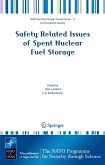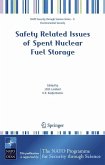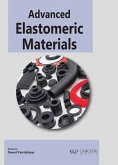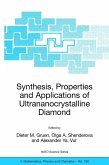Here is the first book to discuss the current understanding of silver metallization and its potential as a future interconnect material for integrated circuit technology. With the lowest resistivity of all metals, silver is an attractive interconnect material for higher current densities and faster switching speeds in integrated circuits. Over the past ten years, extensive research has been conducted to address the issues that have prevented silver from being used as an interconnect metal. The authors provide details on a wide range of experimental, characterization, and analysis techniques. The book is written for students, scientists, engineers, and technologists in the fields of integrated circuits and microelectronics research and development.
Silver has the lowest resistivity of all metals, which makes it an attractive interconnect material for higher current densities and faster switching speeds in integrated circuits. Over the past ten years, extensive research has been conducted to address the thermal and electrical stability, as well as processing issues which, to date, have prevented the implementation of silver as an interconnect metal. Silver Metallization: Stability and Reliability is the first book to discuss current knowledge of silver metallization and its potential as a favorable candidate for implementation as a future interconnect material for integrated circuit technology.
Silver Metallization: Stability and Reliability provides detailed information on a wide range of experimental, characterization and analysis techniques. It also presents the novel approaches used to overcome the thermal and electrical stability issues associated with silver metallization. Readers will learn about the: - preparation and characterization of elemental silver thin films and silver-metal alloys; - formation of diffusion barriers and adhesion promoters; - evaluation of the thermal stability of silver under different annealing conditions; - evaluation of the electrical properties of silver thin films under various processing conditions; - methods of dry etching of silver lines and the integration of silver with low-k dielectric materials.
As a valuable resource in this emerging field; Silver Metallization: Stability and Reliability will be very useful to students, scientists, engineers and technologists in the fields of integrated circuits and microelectronics research and development.
Silver has the lowest resistivity of all metals, which makes it an attractive interconnect material for higher current densities and faster switching speeds in integrated circuits. Over the past ten years, extensive research has been conducted to address the thermal and electrical stability, as well as processing issues which, to date, have prevented the implementation of silver as an interconnect metal. Silver Metallization: Stability and Reliability is the first book to discuss current knowledge of silver metallization and its potential as a favorable candidate for implementation as a future interconnect material for integrated circuit technology.
Silver Metallization: Stability and Reliability provides detailed information on a wide range of experimental, characterization and analysis techniques. It also presents the novel approaches used to overcome the thermal and electrical stability issues associated with silver metallization. Readers will learn about the: - preparation and characterization of elemental silver thin films and silver-metal alloys; - formation of diffusion barriers and adhesion promoters; - evaluation of the thermal stability of silver under different annealing conditions; - evaluation of the electrical properties of silver thin films under various processing conditions; - methods of dry etching of silver lines and the integration of silver with low-k dielectric materials.
As a valuable resource in this emerging field; Silver Metallization: Stability and Reliability will be very useful to students, scientists, engineers and technologists in the fields of integrated circuits and microelectronics research and development.
From the reviews:
"This book is aimed at addressing and reviewing the engineering aspects of improving the thermal and electrical stability of silver with a view to use as an interconnect material in integrated circuits. ... this book can provide a quick overview of the state of the art, current trends and hurdles yet to be overcome." (Contemporary Physics, Vol. 51 (6), 2010)
"This book is aimed at addressing and reviewing the engineering aspects of improving the thermal and electrical stability of silver with a view to use as an interconnect material in integrated circuits. ... this book can provide a quick overview of the state of the art, current trends and hurdles yet to be overcome." (Contemporary Physics, Vol. 51 (6), 2010)








